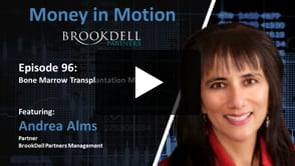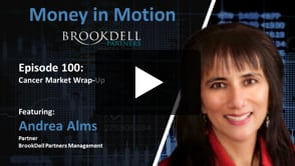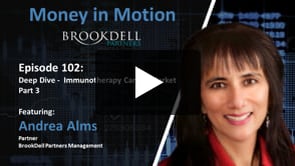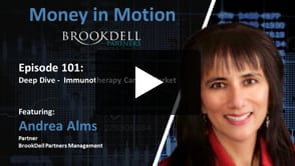Hedge Fund Dashboard:
Top Hedge Fund News, Member Posts, Hedge Fund Daily Indices and more!
Stockholm (HedgeNordic) – COVID-19 struck many small and medium-sized companies hard in the earlier part of 2020, leaving loans directed towards these entities at risk. Despite the current challenging conditions, Fredrik Sjöstrand and Peder Broms, who are managing the Scandinavian Credit Fund I – a direct lending fund focusing on the Nordics, see ample opportunities in the Nordic private debt market and have managed to show solid performance numbers in what has been unprecedented markets for direct lending in the Nordic region and elsewhere.
“The situation has improved strongly since the COVID-19 outbreak and we are in a very interesting position in terms of deal flow. There is a strong demand for direct loans across the region and the quality of lenders is high. For us as a local player with a solid network and close relationships with the companies in the region, we see continued good opportunities ahead”, says Fredrik Sjöstrand, head of investments and PM of Scandinavian Credit Fund I – a direct lending fund focusing on the Nordic region with approximately SEK 4 billion in assets under management.
“The situation has improved strongly since the COVID-19 outbreak and we are in a very interesting position in terms of deal flow. There is a strong demand for direct loans across the region and the quality of lenders is high.”
Peder Broms, who is heading the fund’s origination activities, underscores that direct lending has become more of a standard alternative in the Nordics, underpinning the strong demand picture.
-Peder Broms, Head of Origination at Kreditfonden
“Direct lending has become much more mainstream these days and is seen as a real alternative to corporate bonds and bank lending. It is gathering pace in the Nordics following a strong development in Europe and the US. In the US, direct lending has been a massively growing part of the private debt market since the ’90s, but it was not until around 10 years ago that this was introduced to Nordic companies, we have some catching up to do,” Broms says.
“Direct lending has become much more mainstream these days and is seen as a real alternative to corporate bonds and bank lending.”
Deloitte’s Alternative Lending tracker report confirms that there is strong activity in the Nordics with regards to direct lending. According to the report, direct lending was the fastest-growing financing form in the Nordics (+233%) with regards to large deals (10 million euro plus) between 2017 and 2019.
Sjöstrand says that the Nordic market is ideal for direct lending activities as it has some of the key traits that make for a well-functioning market.
“Generally speaking, Swedish companies are well-managed with defined control functions, known legal framework and a high level of transparency. This should not be underestimated as it facilitates lending processes considerably and makes a solid foundation for good relationships with the lenders.”
“Generally speaking, Swedish companies are well-managed with defined control functions, known legal framework and a high level of transparency.”
Fredrik and Peder emphasize that being a local fund in the Nordic direct lending space give them clear advantages and unlocks unique opportunities. The ability to offer more flexible loan terms has also played into the successful management of the fund during the COVID-turbulence.
“We are targeting loans in the EUR 10 million – 30 million range, with a credit quality that is at par or better than high yield. In this niche, very few of the big players are interested in participating and we can negotiate loan terms that are much more flexible in terms of repayment structures compared to traditional bank lending. This served us well during the turbulence, as we could be more solution-oriented than other lenders for those clients that were most pressured by the situation”, Fredrik says.
Sjöstrand emphasizes that the fund is not exposed to the most COVID-19 sensitive sectors including transportation, restaurants, and tourism, which is partly why the fund has been resilient throughout the crisis.
As of end September, the Scandinavian Credit Fund I fund recorded a year-to-date gain of 2.8 percent, in line with the 3-5 percent annual return target (revised from 6-7 percent due to the corona crisis impact). The negative month in March (-0.8%) marked the fund’s second down-month since inception in January 2016.
“We are pleased with how the fund has performed during the corona crisis. We have had a very close dialogue with our borrowers in order to fully understand the impact of COVID-19 on their business activities. As for credit losses, confirmed or anticipated, we are reporting in line with the IFRS9 accounting standard, meaning that the negative impact of the corona crisis is already visible in the NAV of the fund,” Sjöstrand explains.
“We are pleased with how the fund has performed during the corona crisis. We have had a very close dialogue with our borrowers in order to fully understand the impact of COVID-19 on their business activities.”
Kreditfonden, the management company behind the Scandinavian Credit Fund I, has an 8-person investment team that are closely monitoring the loans outstanding and there is a separate structure to handle “problem credits”. Sjöstrand says that the management of unlisted debt is “resource-intensive”, but that it is crucial to have experienced credit analysts in place in order to set up and closely monitoring all ongoing relationships. These capabilities have been put to the test during the crisis.
“Since we mainly do senior secured debt. It is very important to have structures and resources in place to be able to step in when things do not go as planned and when loans are put to risk. We want to be proactive in finding solutions before this happens, ideally, but in certain cases, we need to step in and force action in order to protect the interests of the fund’s investors. We have had very few incidents given the severity of the COVID crisis,” Broms explains.
“Since we mainly do senior secured debt. It is very important to have structures and resources in place to be able to step in when things do not go as planned and when loans are put to risk.”
During the year, another challenge was imposed on the Scandinavian Credit Fund I as redemption orders of one-fifth of the fund was registered as the corona crisis erupted in March. This forced the fund to put up redemption gates in order to orderly meet those requests. Redemptions have now been fully paid out, Sjöstrand says.
“We had a liquidity mismatch as a result of the sudden liquidity preference among investors in March and April. We could not unwind loans to meet the significant redemption request at that point. But investors have now been paid in full, although with some delay. We see this as an exceptional event, but it highlights that there are liquidity risks inherent in this type of investment, and we can only make sure to be transparent with investors about those risks.”
Looking ahead, Fredrik and Peder are upbeat about the prospects of the direct lending market in the Nordics, and they see strong investor interest in Scandinavian Credit Fund I as well as in their other fund, Nordic Factoring Fund, targeting the Nordic factoring market. There are also new product launches ahead, Sjöstrand reveals.
“We have a very strong pipeline of new loan deals that makes us comfortable that the Scandinavian Credit Fund I will remain a compelling offer for low risk returns in an environment where traditional fixed income investments have severe difficulties producing any returns whatsoever.”
“In the Nordic Factoring Fund, that has yearly liquidity for investors, we also see a very strong deal flow and we are producing consistent returns in line with the stated return target of 6 percent annually.”
“We have a very strong pipeline of new loan deals that makes us comfortable that the Scandinavian Credit Fund I will remain a compelling offer for low risk returns in an environment where traditional fixed income investments have severe difficulties producing any returns whatsoever.”
“Coming up we have the High Yield Opportunity Fund, which is a fund that targets Nordic high yield debt opportunistically, aiming to take advantage of the illiquidity premium inherent in the region. The fund targets a credit quality that is in line or better than high yield senior secured lending and operates below or in the same space as high yield. It has a lock-up of three years and will be able to take advantage of markets that are in stress, such as that experienced during the corona crisis.”
“We are currently also pushing the Nordic Direct Lending Fund which is an institutional fund targeting the Nordic direct lending market. It has a closed-end structure and targets larger loan deals. We aim to have seed capital ready to launch early next year and look forward to offer institutions in the Nordics and elsewhere a local direct lending option.”
Ample Opportunities in Nordic Private Debt Market on HedgeNordic.
Today's Hedge Fund Headlines:
Access Over 250K+ Industry Headlines, Posts and Updates
Join AlphaMaven
The Premier Alternative Investment
Research and Due Diligence Platform for Investors
Free Membership for Qualified Investors and Industry Participants
- Easily Customize Content to Match Your Investment Preferences
- Breaking News 24/7/365
- Daily Newsletter & Indices
- Alternative Investment Listings & LeaderBoards
- Industry Research, Due Diligence, Videos, Webinars, Events, Press Releases, Market Commentary, Newsletters, Fact Sheets, Presentations, Investment Mandates, Video PitchBooks & More!
- Company Directory
- Contact Directory
- Member Posts & Publications
- Alpha University Video Series to Expand Investor Knowledge
- AUM Accelerator Program (designed for investment managers)
- Over 450K+ Industry Headlines, Posts and Updates








